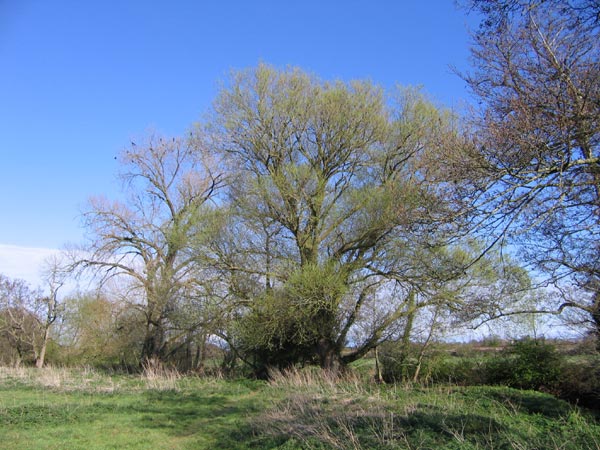NYNEHEAD'S ENVIRONMENT
Data from the 2004 'Nynehead Appraisal' suggests that the environment is of interest and concern to many of us. Nearly 70% of those who responded to the questionnaire appear to agree with the proposition that 'wild plants, birds and animals around Nynehead are important', and about a third of those indicated separately that they might be willing to take a positive part in some sort of 'environmental' activity. Such interest merits its own place on the website - and this is it!

This image is of some fine mature black poplars (Populus nigra) to be found along the River Tone in East Nynehead.
The Parish of Nynehead is predominantly agricultural. As well as cattle and arable crops there is a large soft fruit farm. The terrain is undulating. A small river, the Tone, meanders through the southern part of the parish. While the far north-western tip of the parish, just north of Chipley, is about 85 metres above sea level the bulk of the parish langusihes between 45 and 70 metres. The towering mass of Mount Nynehead [known as 'The Knapp' - probably from cnæp, the Anglo-Saxon for 'top, cop, knop or button'] stands at an impressive 73 metres and is home to an old R.O.C. Observation Post while the River crawls out of the parish at around the 35 metre mark. Geologically Nynehead dates from the Triassic; the western half of the parish is predominantly sandstone while the eastern half is mudstone. See the Nynehead Geological Survey for more details.
